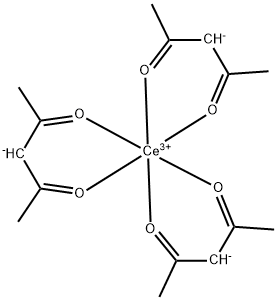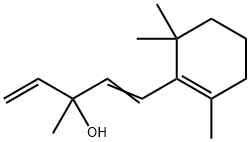Platinum bis(acetylacetonate)
Synonym(s):2,4-Pentanedione platinum(II) derivative;Platinum bis(acetylacetonate), Bis(acetylacetonato) platinum;Platinum(II) acetylacetonate (50% Pt);Pt(acac)2
- CAS NO.:15170-57-7
- Empirical Formula: C10H14O4Pt
- Molecular Weight: 393.29
- MDL number: MFCD00000028
- EINECS: 239-223-5
- SAFETY DATA SHEET (SDS)
- Update Date: 2025-07-04 15:02:27

What is Platinum bis(acetylacetonate)?
Chemical properties
yellow to yellow-green powder
The Uses of Platinum bis(acetylacetonate)
Used for photoactivated hydrosilylation reactions between vinyl and silane groups; in the deposition of platinum metal and in the preparation of platinum nanotubes. Precursor for FePt superlattice magnetic nanoparticles.
What are the applications of Application
Platinum(II) acetylacetonate is A pre-cursor for nano-materials.
Purification Methods
It crystallises from *C6H6 as yellow crystals and is dried in air or in a vacuum desiccator. [Werner Chem Ber 34 2584 1901, Fernelius & Bryant Inorg Synth V 105 1957, Beilstein 1 H 783, 1 IV 3678.]
Properties of Platinum bis(acetylacetonate)
| Melting point: | 249-252 °C(lit.) |
| Flash point: | 170°C |
| storage temp. | Store below +30°C. |
| solubility | soluble in Acetone |
| form | Powder |
| Specific Gravity | 2.336 |
| color | Yellow to yellow-green |
| Water Solubility | insoluble |
| Sublimation | 170 ºC |
| BRN | 4136189 |
| NIST Chemistry Reference | Platinum bis(acetylacetonate)(15170-57-7) |
| EPA Substance Registry System | Platinum, bis(2,4-pentanedionato-.kappa.O,.kappa.O')-, (SP-4-1)- (15170-57-7) |
Safety information for Platinum bis(acetylacetonate)
| Signal word | Warning |
| Pictogram(s) |
 Exclamation Mark Irritant GHS07  Health Hazard GHS08 |
| GHS Hazard Statements |
H315:Skin corrosion/irritation H319:Serious eye damage/eye irritation H335:Specific target organ toxicity, single exposure;Respiratory tract irritation H361:Reproductive toxicity |
| Precautionary Statement Codes |
P201:Obtain special instructions before use. P280:Wear protective gloves/protective clothing/eye protection/face protection. P308+P313:IF exposed or concerned: Get medical advice/attention. |
Computed Descriptors for Platinum bis(acetylacetonate)
New Products
4,4-Difluoropiperidine hydrochloride tert-butyl 9-methoxy-3-azaspiro[5.5]undecane-3-carboxylate Indole Methyl Resin N-Isopropylurea N,N-Dicyclohexylcarbodiimide(DCC) MELDRUMS ACID 5-METHYLISOXAZOLE-4-CARBOXYLIC ACID Magnessium Bis glycinate Zinc ascorbate 1-bromo-2-butyne 2-acetamidophenol 9(10H)-anthracenone Erythrosin B, 4-Piperidinopiperidine 2-((4-morpholinophenylamino) (methylthio) methylene) malononitrile 2,4-dihydroxybenzaldehyde 3-(4-morpholinophenylamino)-5-amino-1H-pyrazole-4-carbonitrile Methyl 2-methylquinoline-6-carboxylate 2,6-dichloro-4-nitropyridine 4-Bromo-2-chlorobenzonitrile 2-(benzylamino)acetic acid hydrochloride 4-(tert-Butoxycarbonylamino)but- 2-ynoic acid 3,4-dihydro-2H-benzo[b][1,4]dioxepine 1-Phenyl-1-cycloprppanecarboxylicacidRelated products of tetrahydrofuran








You may like
-
 Platinum(II) 2, 4-pentanedionate, Pt 48.0% min. CAS 15170-57-7View Details
Platinum(II) 2, 4-pentanedionate, Pt 48.0% min. CAS 15170-57-7View Details
15170-57-7 -
 Platinum acetyl acetonate, 97% CAS 15170-57-7View Details
Platinum acetyl acetonate, 97% CAS 15170-57-7View Details
15170-57-7 -
 Platinum(ii) acetylacetonate 95% CAS 15170-57-7View Details
Platinum(ii) acetylacetonate 95% CAS 15170-57-7View Details
15170-57-7 -
 Bis(2,4-pentanedionato)platinum(II) CAS 15170-57-7View Details
Bis(2,4-pentanedionato)platinum(II) CAS 15170-57-7View Details
15170-57-7 -
 Platinum(II) acetylacetonate CAS 15170-57-7View Details
Platinum(II) acetylacetonate CAS 15170-57-7View Details
15170-57-7 -
 Platinum(II) acetylacetonate CAS 15170-57-7View Details
Platinum(II) acetylacetonate CAS 15170-57-7View Details
15170-57-7 -
 Platinum(II) acetylacetonate (50% Pt) CAS 15170-57-7View Details
Platinum(II) acetylacetonate (50% Pt) CAS 15170-57-7View Details
15170-57-7 -
 20677-73-0 (2,2-diethoxyethyl)methylamine 98%View Details
20677-73-0 (2,2-diethoxyethyl)methylamine 98%View Details
20677-73-0
Statement: All products displayed on this website are only used for non medical purposes such as industrial applications or scientific research, and cannot be used for clinical diagnosis or treatment of humans or animals. They are not medicinal or edible.
